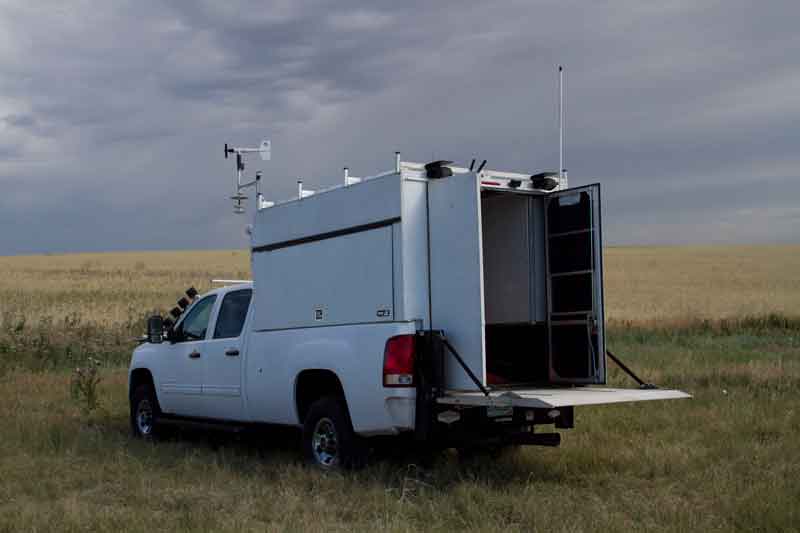Truck Equipment Industry Aids in Groundbreaking Tornado Data
We first reported on the A.R.E. Twistex Probe back in September — an awesomely outfitted work truck, made to travel through 100-mph winds and softball-size hail, built for tornado chaser Tim Samaras, star of the hit television show “Storm Chasers” on Discovery Channel. Well, now we just found out that the A.R.E. 2010 GMC SIERRA Twistex Probe Vehicle has enabled Samaras to record historic tornado measurements.
Tim needed to deploy a 400-lb “probe” instrument, his own invention, in the path of a highly-destructive tornado while at the peak of its powers (sound like the plot of Twister to you?). Well, on the 22 of May, in South Dakota, Tim did precisely that.
“The measurements we collected that day were historic, as we measured the wind speed of the passing tornado at two different heights. This confirmed that the boundary layer [the highest rate of change wind speed] is less than 2 ft high,” Samaras later said. “This measurement would not have been possible without a way of quickly getting the instrument off the truck — and the lift gate most certainly has risen to the challenge!”
Samaras has been chasing tornadoes and recording valuable data for over ten years. Earlier this year, when he was hoping to build a new chase truck, Mastercraft Truck Equipment in Englewood, Colo., put together what Tim refers to as the “ultimate tornado chase vehicle.” The truck is outfitted with a custom A.R.E. Deluxe Commercial Truck Cap and Tommy Gate G2-Series 1,500-lb capacity hydraulic lift gate. Other additions include: an Eclipse navigation system with back-up camera, Jotto Desk mobile office laptop holders, Luverne hitch steps, mega steps and grill insert, a Warn XD 9000I Winch system, as well as numerous square sensors covering the hood and cab.
The data collected is another step in further understanding tornadoes and will help engineers in how they design and build structures in the future.
“This information — along with future deployments will be very useful for engineers to construct buildings in the Midwest to help resist these types of winds. If we can build better buildings — then we’d eventually save lives,” says Samaras.


Comments are closed here.